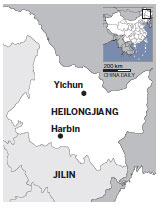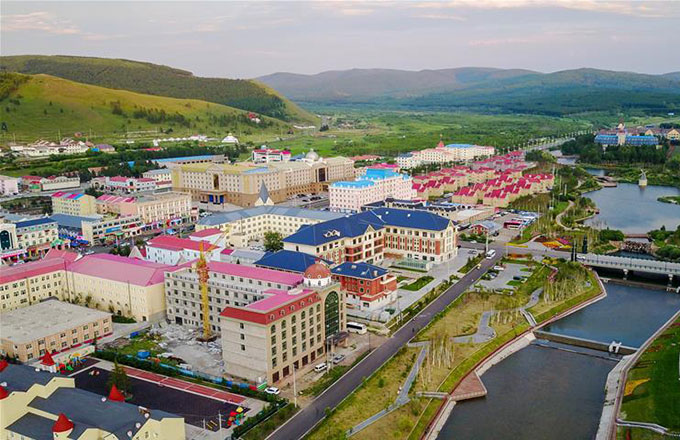Logging gives way to green enterprises
City in Northeast China returns to GDP growth as it changes strategy
When Yichun, a border city in Heilongjiang province, banned logging in 2013, it lost a strong economic engine. But it forged ahead with green growth, ecotourism and better use of the byproducts of its forests.
"We've changed our minds and are utilizing our natural resources," said Han Ku, the city's mayor. "Our green resources and beautiful nature - the forests, mountains and rivers - have become the drivers of sustainable growth."

Since 1958, when the city was established, Yichun has provided China with about 10 percent of the timber used in construction, 270 million cubic meters in all, making a significant contribution to the nation's growth, according to the city government.
Yet the excessive deforestation that occurred over the decades dragged the economy down in the 1990s.
"We were in a severe crisis, and many people had to leave the city for work," Han said. The population fell from around 1.3 million at the time to 1.21 million today.
In 2010, the city banned the cutting of a protected species commonly known as Korean pine. In 2013 it banned the commercial use of any timber obtained from natural forests, two years ahead of the rest in China.
The moves gave the forests time to recover, with the coverage growing slightly from 83.9 percent of the city's area in 2013 to 84.4 percent last year. Yet it also cut economic growth, which was fueled by timber sales. "That pushed us to find a sustainable solution," the mayor said.
Since then, Yichun has explored other avenues related to forestry, such as developing tourism based on its beautiful scenery, forest foods like pine nuts and blueberries, as well as the planting and processing of traditional medicinal herbs.

In addition, the industries the city developed are also environment friendly, Han said. "No polluting companies are allowed to produce, and the existing companies - including mines - meet the standards for waste discharge."
After working in this direction for years, the city has finally seen tourism boom in the first half of this year. More than 4.45 million tourists came to the forestry city and spent more than 357 million yuan ($53 million), an increase of 30.4 percent year-on-year, according to the Heilongjiang Bureau of Statistics.
GDP from the service sector now accounts for about 40 percent of the economy, becoming the major pillar of Yichun's economy. The city saw its GDP begin to recover in 2016 after years of shrinking.
In 2014, GDP growth plummeted 9.4 percent from the previous year. The slide continued in 2015, to 2.7 percent. But in 2016, GDP grew by 1 percent, and then strengthened. In the first quarter of this year, it grew by 4.8 percent, followed by 6.2 percent growth in the second quarter.
"The recovery proves that the path we chose is working, and we plan to do more. In one to two years, we will become the new engine of Heilongjiang," Han said.
In China, many cities with rich forest resources thrived in the lumber industry but then slid back due to environmental deterioration.
"Among their economic restructuring options, it's a common practice to develop tourism, as Yichun has, to sustain economic growth and protect the environment - a good choice," said Wang Cheng, a researcher at the Forestry Research Institute.
But to sustain tourism over a long period, cities need to develop their own unique features and diversify their forestry services, he said.
zhengjingran@chinadaily.com.cn
(China Daily 08/08/2017 page5)






















